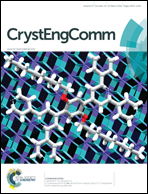Up-conversion luminescence properties of lanthanide-doped LuF3 with different morphologies synthesized via a facile ionothermal process
Abstract
Up-conversion (UC) crystals of lanthanide-doped LuF3 with different morphologies (nanoparticles, shuttle- and litchi-like microcrystals) have been synthesized via a facile ionothermal method. The dependence of the morphological differences of the products on the solvent composition and reaction time has been studied in detail, and a possible formation mechanism has also been proposed. The emission spectra showed that the UC luminescence intensity can be adjusted by changing the morphology of LuF3. Both LuF3:Yb3+/Er3+ and LuF3:Yb3+/Ho3+ nanoparticles synthesized using water/IL (ionic liquid) as mixed solvent exhibit a significant enhancement of the yellowish-green emission under 980 nm laser excitation. Besides, nearly NIR (near-infrared) to NIR UC luminescence has been achieved in LuF3:Yb3+/Tm3+ nanoparticles synthesized using EG (ethylene glycol)/IL as mixed solvent. Furthermore, the ratio of the emission intensity at 812 nm to that at 545 nm reaches 55. Our results indicate that lanthanide-doped LuF3 provides promising applications in chromatic displays and bio-imaging.


 Please wait while we load your content...
Please wait while we load your content...